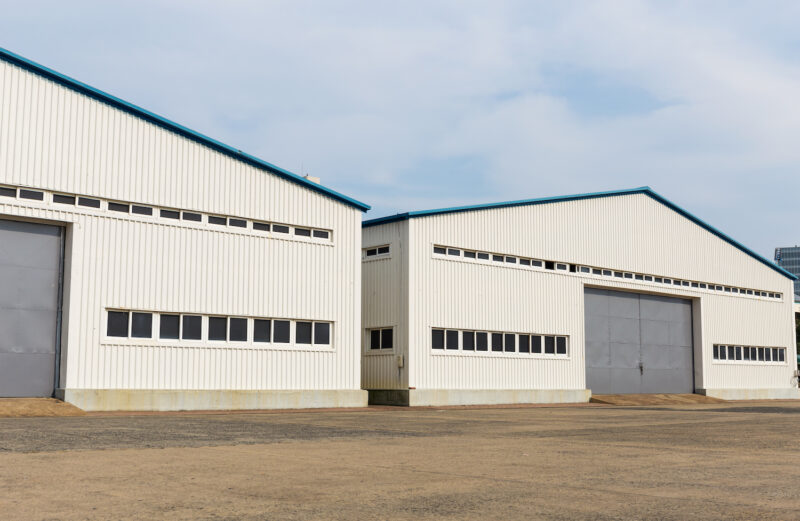Tips to optimize warehouse efficiency and streamline operations

Ioana Neamt

Efficiency — it’s become almost a buzzword when it comes to the way we operate our tasks and how we run our daily lives. It seems to be as elusive as that highly sought-after, yet never-achieved work-life balance everyone’s always talking about. However, in your personal life, inefficiency might not always have dire consequences.
It’s perfectly fine if you postpone that vacuuming for another day, or work on updating your LinkedIn profile tomorrow. The world won’t crumble, we promise. But when it comes to optimizing your warehouse operations, inefficiency can have some gnarly consequences, like revenue loss and even unhappy customers.
So, what are some things you can do to make sure you reach optimal warehouse efficiency and keep operations running smoothly? Let’s have a look at some tips and strategies you can implement to optimize warehouse efficiency and start reaping the benefits.
What is warehouse efficiency?
Warehouse efficiency is all about getting your operations running like a well-oiled machine. It means optimizing everything in your warehouse — from the warehouse layout and inventory organization to the tech and systems you use to manage orders and shipments. When your warehouse is efficient, things flow smoothly, orders get fulfilled quickly and accurately, and you keep costs and errors to a minimum. This, in turn, leads to satisfied customers, which is the ultimate goal, really.
To achieve warehouse efficiency, you need a good recipe that mixes smart planning with best practices and a mindset of continuous improvement. This involves training your staff, embracing automation and software solutions (like Katana), and regularly tweaking your processes. Think of it like fine-tuning an engine: the goal here is to create an environment where all the little cogs work in perfect harmony, leading to happier customers and a healthier bottom line.

Why is warehouse efficiency important?
Warehouse efficiency is critical to any business because it keeps your entire operation humming smoothly — yes, another car analogy, sorry. When your warehouse is running efficiently, you’re saving time and money by reducing handling costs, speeding up order fulfillment, and minimizing errors. This translates to happier customers who get their orders on time and in perfect condition — no more angry emails or stressful phone calls!
What’s more, an efficient warehouse makes the best use of your space and resources, allowing you to store more products and handle higher volumes without breaking a sweat. It’s like having a secret weapon that boosts your productivity and keeps your business ahead of the competition. So, in a nutshell, warehouse efficiency is key to keeping everything on track and your business thriving. Full steam ahead!
How do you measure warehouse efficiency?
Measuring warehouse efficiency involves assessing various key performance indicators (KPIs) that reflect how well your warehouse is performing when it comes to productivity, accuracy, and cost-effectiveness.
Common KPIs to track warehouse efficiency can include:
- Order fulfillment rate
- Inventory turnover
- Order picking accuracy
- On-time delivery performance
- Labor productivity
Of course, these are just some of the most common KPIs to track, but depending on the specifics of your business and industry, you might tweak the list. By tracking these metrics over time, you can identify areas of improvement and gauge the effectiveness of any changes or optimizations you implement.
Technology also plays a crucial role in measuring warehouse efficiency. Warehouse management systems (WMS) and other software solutions provide real-time visibility into inventory levels, order statuses, and employee performance, allowing for more accurate monitoring and analysis of warehouse operations. Regularly reviewing and analyzing these metrics enables you to make data-driven decisions that further boost efficiency and drive continuous improvement in your warehouse operations. What’s not to like?
The risks of not optimizing warehouse efficiency
Failing to optimize warehouse efficiency can lead to increased costs, reduced customer satisfaction, revenue costs, and a lot of missed opportunities. Basically, nothing good can come out of it, so why take chances?
Inefficient warehouse processes can lead to significant waste of time and resources, employee and customer dissatisfaction, not to mention increased inventory holding costs due to poor inventory management practices and unsold inventory. Delayed shipments, inaccurate or incomplete orders, and mismanaged returns can also impact your brand’s reputation and trustworthiness and cause you to lose the loyalty of your customers.
At the same time, if your business has opportunities for growth but you fail to optimize warehouse operations to handle additional demand, you’ll once again be in a world of trouble. You need to implement strategies and tools that can help your business scale operations and adapt to changes in market demand.
6 steps to optimize warehouse efficiency
So, now that we’ve learned how warehouse efficiency can impact your business from top to bottom, it’s time to take action. Here are some top tips and strategies you can implement today to start optimizing warehouse operations and ensure maximum efficiency!

1. Define and track relevant KPIs
Start by pinpointing the most critical KPIs for your business, such as delivery lead time, order fulfillment rate, inventory turnover, and other metrics, and track them continuously. This will give you invaluable insight into the inner workings of your warehouse operations, help you keep track of inventory in real time, and make sure you can keep up with demand while avoiding issues like overstocking or stockouts.
2. Train your staff
Provide extensive training to your warehouse staff to ensure they understand their roles and responsibilities, and help them become proficient in operating equipment and software systems. Encourage employees to suggest process improvements and involve them in decision-making to foster a culture of collaboration and transparency, and avoid staff turnover at the same time. A win-win scenario.
3. Make the best of cross-docking
Cross-docking is a strategy that helps you streamline the delivery of goods and products while ensuring warehouse operations efficiency at the same time. Through cross-docking, you can unload goods from delivery vehicles and transfer them immediately to vehicles handling outgoing orders. This way, you won’t have to make room to store additional inventory, thus streamlining your inventory holding costs.
4. Keep tabs on your inventory
Speaking of inventory, keeping a close eye on all the items in your warehouse is critical to creating an efficient supply chain and streamlining warehouse operations. Your best bet is to invest in inventory management software (such as Katana, of course) that can help you oversee the entire chain of operations. You’ll be able to see which are your best-selling products, your slow-moving items, anticipate demand spikes to make sure inventory levels are always optimized, and much more.
5. Optimize your warehouse layout
Optimize and improve your warehouse layout to minimize travel time and streamline the flow of goods in and out of your facility. Take into consideration things like:
- Demand
- Size
- Frequency of use
As well as other relevant key factors when designing your warehouse layout, to facilitate faster order picking and improve delivery times. At the same time, make the best of vertical spaces in your warehouse to increase storage capacity and eliminate the need for additional storage space.
6. Invest in technology and automation
Implement a warehouse management system (WMS) and other solutions like barcodes, RFID systems, or serial number tracking to automate and facilitate warehouse operations and ensure efficiency. Through inventory tracking, order processing, labor management, and more, you can automate certain processes while eliminating human error and allowing your staff to focus on more critical tasks.
Warehouse efficiency done right with Katana

Your warehouse is the heartbeat of your company’s operations, and making sure it runs smoothly and efficiently should be at the top of your priority list. With Katana, the task becomes much easier, because our cloud inventory software allows you to automate operations, keep track of your entire supply chain, and prevent any issues that might end up disrupting your bottom line.
With features like live inventory management, inventory planning and forecasting, seamless integration with the best ecommerce platforms, complete traceability, data collection and analytics, you can keep your warehouse running smoothly, steadily, and, most of all, efficiently. Get a demo to see Katana in action now and learn all the ways it can make your warehouse more efficient.

Ioana Neamt
Table of contents
Get inventory trends, news, and tips every month
Get visibility over your sales and stock
Wave goodbye to uncertainty with Katana Cloud Inventory — AI-powered for total inventory control